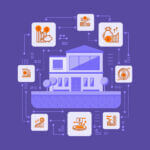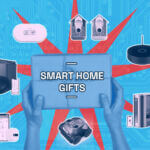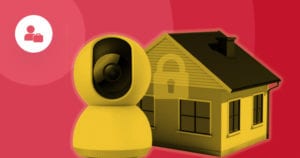
The smart home concept was tested in the year 2000 when computer scientists and engineers undertook the Aware Home experiment at Georgia Tech. Twenty years have passed, and the adoption of fully integrated smart homes is still as rare as an albino alligator (yes, they do exist!). Although worldwide sales look promising, the smart television and virtual assistant technology consume the lion’s share of the smart home global market turnover. However, the smart home ecosystem encompasses many diverse products that deserve more exposure. It’s time the manufacturers reflected on how they could increase consumer adoption of their innovative smart products. Let’s take a look at five possible ways they can do so.
#1: Ease of Use
Ease of use is an important selling point that the smart manufacturer needs to consider during the R & D process. Ease of use can ensure long-term acceptance if the smart device or devices work with little complexity or effort. Introducing a simple user interface with straightforward instructions would go a long way to alleviate usage frustration encountered by many first-time adopters of smart products.
For example, the elderly would be more receptive to new innovative e-health solutions, such as smart pill dispensers, if designed with simplicity in mind. As a result, ease of use can create a sense of end-user satisfaction, which increases acceptance and usage, especially if an individual feels they can competently carry out an action using their smart device with little fuss.
#2: Usefulness
Developed initially to assess goal-orientated performance and adoption of computers in a working environment, usefulness plays a significant role in customer acceptance of smart home technology. Defined as an individual’s perception that using the new technology will enhance or improve her/his performance or situation, usefulness has been extensively evaluated in various scenarios, from design to research. The basic premise is that if a consumer does not find a smart device useful, it is deemed to have minimal value and difficult to master, which creates a negative attitude. The repercussions, either positive or negative, are far-reaching. Additionally, if individuals, for example, are unaware of possible savings from a smart meter, they will not consider using the device. Usefulness is a broad concept encompassing many latent variables such as knowledge or experience. Therefore, more awareness of smart home technology’s usefulness via advertising and brand awareness is essential to create a positive attitude and increase consumer uptake.
#3: Cost
Considering that sales performance is a metric of sector accomplishment and a reflection of consumer popularization, the smart home industry seems to be healthy, implying a degree of global acceptance and adoption of smart home technology.
Devices such as Amazon Alexa and Google’s Nest Hub had a market value of $157 billion in 2016, and global sales for smart devices indicate a year-on-year sales increase. Yet, as outlined earlier, specific devices account for most smart home purchases. Spending money on cheap smart products maybe not be beneficial in the long term, and expensive products may push many possible consumers out of the market. Moreover, people in less developed countries may perceive smart technology as a luxury item afforded only by the rich.
Cost refers not only to price but to a consumer’s prior contemplation of the benefits and disadvantages in line with the price of a smart device. This cost also includes the device’s installation, maintenance, and operation. The implication is that smart technology manufacturers try to target early adopters whose income is higher than a country’s national average. It is feasible to suggest that they should possibly create lighter versions of their technology to capture the less wealthy sections of society and communities in non-Western countries.
#4: Privacy
Every time a smart household appliance performs an action, data from device usage is stored and processed in an advanced cloud. The cloud-centric approach allows a third party to access the smart home’s data and relay effective solutions directly to the consumer via the smartphone or smart internet-based smart hub. Based on the cloud data, an energy company could send a homeowner weekly analytics or advice on consuming less energy that promises high reliability, scalability, and autonomy. The question is, for whom, the multinational tech companies or the end-user?
Having third-party companies auditing your data goes against the spirit of the original AwareHome experiment at Georgia Tech. They stressed the importance of privacy of information because smart devices constantly monitor the occupant’s whereabouts and activities, even medical conditions. Furthermore, updates, essential maintenance, and security protocols are generally unavailable to customers who refuse to allow their data to be given to third parties and other unknown sources. Therefore, although smart devices provide the consumer with convenient money, time, and energy-saving information, IoT cloud-based architecture poses risks and privacy issues to the individual through subtle coercive tactics. This creates trust and ethics issues.
Health wearables, for example, provide lifestyle, as well as physical, behavioral, and mental data which third-party companies could manipulate. Such manipulation is very real, according to Shoshana Zuboff, who states, “Companies from every sector seek ways to participate in this universal expropriation of the private experience.” Therefore, it is paramount for smart device manufacturers to allay consumers’ fears that the smarter your home, the more vulnerable you become.
#5: Compatibility
Compatibility, or interoperability, is defined as introducing new smart technology that works in harmony with existing devices within the household. As more people opt to work from home, they want devices that will not create excessive change or emotional upheaval within their home environment. If the smart home device is compatible with existing home appliances and the individuals’ values and experiences, uncertainty decreases, and acceptance of home adoption increases.
For some, the most important factor is compatibility, as devices must technologically fit with each other to create a functional smart home. The crucial role of compatibility suggests that the smart technology industry must create flexible products that intercommunicate easily and can be added or removed without affecting the home smart architecture functionality or individuals’ behavior. Although competitive, technology companies should create standard hardware that does not force consumers to remain loyal to only one brand due to connectivity or compatibility issues. Acceptance rates are likely to increase if manufacturers are sensitive to the end users’ needs concerning compatibility, as less upheaval within the household will create less resistance to smart home technology.
The Future is Smart-Centric
We can see that the smart ecosystem still has some way before the fully integrated smart home becomes the norm. It is apparent that human needs and the psychological effect smart devices have on humans should be factored in when developing smart home technology and striving for its adoption. Slowly, we see other everyday home products such as the fridge-freezer also incorporating smart capabilities.
Smart manufacturers’ sales and marketing departments could highlight how easy to use and useful their products are to increase interest. They could also start by creating a line of simple, yet efficient products to meet people’s digital competence levels. Finally, allowing for human agency and control may alleviate some questions surrounding privacy issues. The future of home-dwelling is smart-centric. Global acceptance will depend on prioritizing a focus on the end-user, and less focus on profit.





 Related Podcast Episode
Related Podcast Episode




 Related Applications
Related Applications


 Latest IoT News
Latest IoT News








